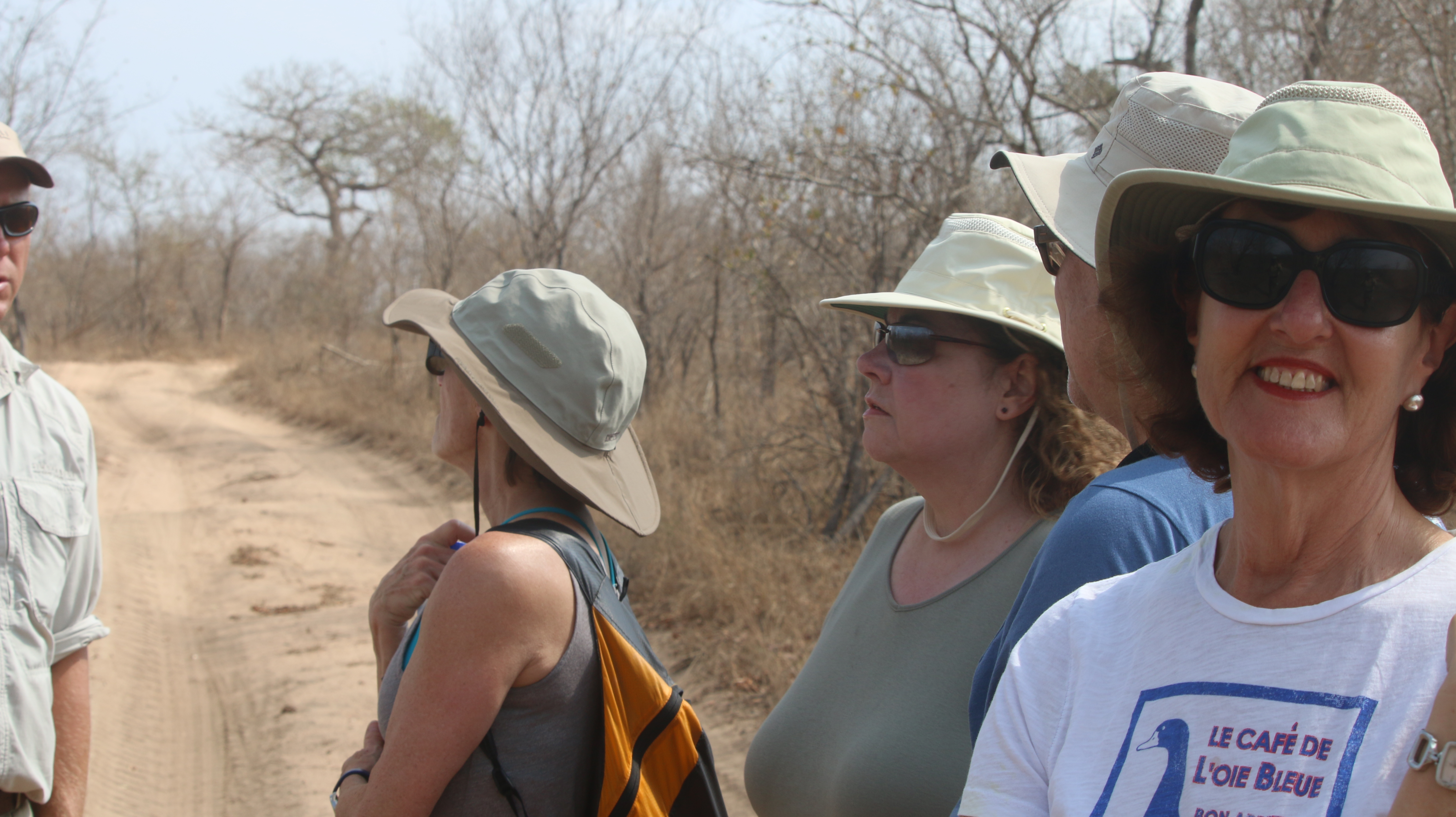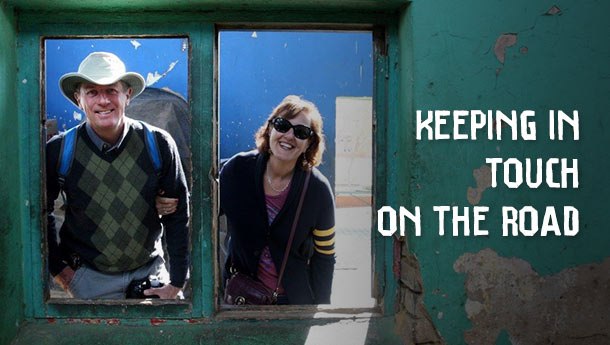African Safari? Yes, It’s Affordable.
The Little-Known African Safari Secret Travel Agents Won’t Tell You
You think nothing of driving across the U.S., from Route 66 to the I-40. You deal with rush hour on the interstate without breaking a sweat. In fact, you’ve mastered the jungle that is…I-95. And yet, you wouldn’t think of doing an African safari as a self-drive…. How come?
This page may contain affiliate links. See our DISCLOSURE.
To put it in perspective, South Africans head for a Kruger National Park safari (and other self-drive safari destinations) as readily as we flock to Yellowstone or Smoky Mountain National Park – and they do it for a fraction of the price overseas visitors pay. Example? You can pay well over $1,000 per person per night in an all-inclusive luxury safari camp where everything is done for you. It’s a great experience if you can afford it. But guess what? If your main mission is to experience the excitement of an African Safari in a beautiful wilderness, then you can do it for as little as $40 per night per person.
Isn’t Self-Drive Difficult to Organize?
I know you’ve got trepidation, but let’s put that to rest here and now. Self-drive safaris are a fabulous and unbelievably affordable option for you. Depending on your South African itinerary, you can plan self-drive safaris in Pilanesburg Game Reserve (near Johannesburg), Addo Elephant Park (reachable from Cape Town), or Hluhluwe (a nice drive from Durban). And then there’s the granddaddy of ‘em all – Kruger National Park – which we’ll use as our example. Here goes….
“I’m Not Comfortable Driving On The Wrong Side Of The Road”
Yes, South Africans do drive on the left, but when you’re driving on the small, untraffic-y roads in Kruger, this is not even a worry. If you’re coming from Joburg or Capetown, plan to fly into the little Skukuza airport at the edge of Kruger National Park and rent your vehicle there. There is a great little Avis outpost in this lovely little airport – no big, congested roads, I promise.
I Can’t Drive a Stick Shift – Isn’t That All They Have There?
I must shamefacedly admit I also never learned to drive a stick. Never fear, you can rent a sweet little automatic car at Skukuza, for example, (make sure to arrange this well ahead of time when you are making your reservations because the Americans mostly go for these). Bear in mind that automatics are more expensive. You can book for free: go ahead and do it right here and now at carrentals.com, where you’ll see all your choices. It’s usually free to cancel, so you have nothing to lose. Then when you get there, buy some water at the airport shop, throw your bags in the back and off you go.

Derek and Elaine at Table Mountain, Cape Town South Africa
 Consider Driving All The Way
Consider Driving All The Way
However, by flying in to Kruger National Park, you’ll be missing out on one of the most scenic drives anywhere, and the commuter flight to Skukuza is not dirt cheap. The major dual highways out of Johannesburg are as good or better than those in the US, and since they’re dual, driving on the left doesn’t matter much. Then, on the secondary roads leading to Kruger Park, there’s not a whole lot of traffic. If you’re at all adaptable, you’ll find the roads good, the drivers generally courteous. But most importantly, you’ll have the flexibility to see the great sights on the way to Kruger National Park. Such as the Blyde River Canyon, the third largest canyon in the world, and the largest green one. Or God’s Window, where the high escarpment ends with great vistas over the wilderness lowlands below. Or the gold rush towns of Pilgrim’s Rest or Graskop. There are plenty of charming hotels and very high standard B&B’s on the way to Kruger, so definitely consider overnighting if you have the time. It’s about a six-hour drive from Johannesburg to Kruger National Park, and well worth it.
How Will I Know Where To Go?
Plan on a minimum of 3-4 night stay in Kruger National Park. I’d suggest basing your visit around two different rest camps – one in the South (Skukuza is my favorite) and one in the center or north of the Park (perhaps Olifants or Satara). All Kruger rest camps are affordable and comfortable. (Think of cabins you’d rent in a U.S. National Park, except better). Download a map of Kruger from the net. Go online to www.sanparks.org/parks/kruger and reserve your own “rondavel” (round little house with thatched roof). These are air conditioned and equipped with indoor bathrooms and outside small porches with a table, chairs, and even a little fridge. Some units include kitchenware. (South Africans love to self-cater, and all rondavels have barbecue grills or “braais” nearby.) This is a really low-cost and fun way to go: barbecuing in the bush is fun, and the food in the little supermarkets is good and cheap. Not to mention the fabulous wines that start at about $3 a bottle!
What If I Don’t Want to Cook?
There’s no need to worry about cooking. All the rest camps have good restaurants, coffee bars and grocery stores. Not quite up to the level of the $1,000 a day private lodges – but pretty darn close. For example, the main restaurant at Skukuza camp is a renowned South African steakhouse, the Cattle Baron. Here’s an example of their menu. As you can see, their most expensive steak is $15 – and they are excellent by any standard.



Elephants visiting the Skukuza Restaurant.
Here’s a plan for a great evening after a day on safari at Skukuza camp: Stock up on snacks, a 6 pack of Windhoek Lager or your new favorite South African wine (all for less than $10), then cater your own “Sundowners” watching the animals drink at the river – or fleeing from pursuing predators. Just watch out for the monkeys, who WILL go after your snacks. (Watch the video below to see Elaine fending them off, and to get a good idea of what the “rondavels” (round thatched guest huts) look like. Then stroll over to the restaurant and enjoy the unbelievably reasonable and good food in a setting overlooking the river with elephants feeding on the banks and crocodiles gliding through the water. For $40 a night for seniors, it’s a steal!
How to Get The Most Out Of Your Self-Drive Safari
Each morning, check the “Sightings” board located at each rest camp before you take off. This lets you know where you might begin to look for leopard, lion, etc. And talk to everyone! You’ll definitely bump into large herds of zebra, antelope, giraffe and elephant*.
Kruger is very well sign-posted, but gear up with a detailed map and guide book (you can see one here, or order it).Also, if you’ve been to Yellowstone, and are familiar with “Buffalo Back-ups,” know that these happen in Kruger, too. (It helps to have someone else do your spotting for you!) Be sure to take plenty of water and snacks with you (though there are lunch spots and “bathroom break” opportunities conveniently located throughout the Park.)
Please note: The speed limit on paved tar roads in the Park is 50 km (30 mph). Distances can be longer than you think. Kruger extends 225 miles from north to south, and 41 miles from east to west. You’ll certainly want to get off the tar roads, and explore some of the gravel roads, too. (These are drivable in a regular sedan – no need for a 4×4.) But, pad your drive times with the knowledge you’ll be stopping to view wildlife, and often, you’ll have to stop to let game meander across the road.)
Be Aware of the Rules!
Unlike U.S. National Parks, gates at Kruger’s rest camps and park exit gates close at sundown (times change seasonally). There’s an exciting reason for this: here you’re in a wilderness where the animals could eat you if you wander around after dark. Scary? Nope: exciting, if you respect the rules. Make sure to understand closing times before you set out on your day’s journey. If you’re late arriving at a rest camp (or exiting the Park) – you will be heavily fined, and in a whole mess of trouble. Avoid stress by allowing much more time than you think you’ll need to get from Point A to Point B. Because if you run across a huge herd of elephants, or a cheetah hunting, you’re not going to want to leave to make a gate closing time (yes, this happened to us.)
Okay, so since you asked , here’s our story. We were driving north to south down Kruger park (which is the size of New Jersey, only longer and skinnier), with Elaine’s daughter, Derek’s stepsister and a friend. We saw leopards, we saw lions, we saw elephants. It was July 4, and it was great fun singing the Star Spangled Banner as we crossed remote rivers between herds of elephants. But all this delayed us to the point that we were 50 miles from the nearest exit gate with 1 hour of closing time. With a 30 mph speed limit, there was no way we were going to make it. So we pulled into the nearest rest camp with a party of 6, without a reservation, and begged for a couple of huts to stay overnight. They accommodated us because there was a no show and they brought back another hut that was out of commission just for us. “There’s no refrigerator,” they said. “We’ll take it!” said we. Turned out to be a great night, but don’t let this unceratinty happen to you, Kruger National Park is pretty much the best natioanl park in the world, so don’t expect to waltz in without a reservation.
Kruger rest camps are in great demand. Don’t just think you can drive into a rest camp and get a place to stay the same night. Arrange everything months in advance.
“I’m Scared Of Elephants Trampling My Car!”
Rest assured, if you are respectful of the wildlife, you will be completely safe. Unless you are in a rest camp or a picnic spot, you are not permitted to leave your vehicle while in the Park. You’ll soon feel comfortable viewing game from your car, and you’ll instinctively understand how much space to leave between your car and the animals. There’s no greater thrill than driving down the road and seeing an elephant herd crossing in front of you. Except when they charge you. (Just kidding. Kinda.)
You Can Do It!
I’ve said it before, and I’ll say it again – Safari is a journey of a lifetime. Yes, staying at an upscale safari lodge is fabulous. But, if your budget is tight, you can be a “do-it-yourselfer.” Derek and I are here to help.













